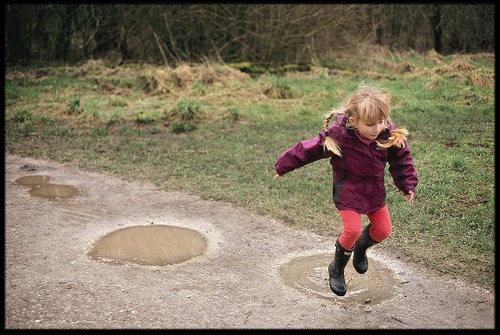Beginning January 1, 2019, a new California law establishes extensive requirements for proper management of waste pharmaceuticals and “sharps.” These new provisions complement – but aren’t actually well-connected to -- medical waste management requirements (I outlined typical state-based requirements here), and workplace provisions to protect workers from “bloodborne pathogens” that may be present because of health and medical procedures and the wastes they generate (I discussed OSHA’s “BBP” Standard here). The rest of this note summarizes these new requirements, adopted by Senate Bill (SB) 212 (Jackson).
Read MoreAudit, Compliance and Risk Blog
California Requires Pharmaceutical and Sharps Waste Stewardship
Posted by Jon Elliott on Tue, Jan 29, 2019
Tags: Health & Safety, California Legislation, Environmental risks, Environmental, Hazcom, pharmaceuticals
EPA Will Aggregate “Substantially Related” Activities When Considering “Project” Thresholds For Pre-Construction Permit Review
Posted by Jon Elliott on Tue, Jan 15, 2019
If you’re contemplating significant changes at a facility that’s regulated as a “major source” under the Clean Air Act (CAA), you’d better figure out whether those changes will “modify” the source enough to trigger significant pre-construction review and permitting by the US Environmental Protection Agency (EPA) or its state or local delegee. The likely answer to questions like yours has changed with CAA amendments and regulations over the decades. EPA has just changed them again, after ending a decade long year delay of a regulatory “interpretation” published in the last week of George W. Bush’s presidency, and stayed by the Obama-era EPA throughout his presidency, and now reaffirmed and activated by the Trump-era EPA.
Read MoreTags: Business & Legal, Health & Safety, Environmental risks, Environmental, EPA
On October 24, the US Chemical Safety and Hazard Investigation Board (which uses the truncated acronym CSB) issued a “Call to Action: Combustible Dust” seeking information about what it has long considered a major industrial hazard. Since 1980 CSB has identified hundreds of industrial accidents involving dust that have injured nearly 1000 workers and killed more than one hundred. In 2006 CSB issued 4 formal recommendations to the Occupational Safety and Health Administration (OSHA) to enhance that agency’s regulation of occupational hazards from combustible dust – particularly from possible fires or explosions, with mixed responses.
Read MoreTags: Employer Best Practices, Health & Safety, OSHA, Environmental risks, Environmental
The Occupational Safety and Health Administration (OSHA) and state worker protection agencies require employers to “guard” moving portions of machines and powered equipment, to prevent entanglements, pinches and amputations. OSHA sets general requirements for machine guarding under its Machine Guarding Standard, plus specific requirements for six different types of equipment in separate standards.
Read MoreTags: Employer Best Practices, Health & Safety, OSHA, Employee Rights
Organizations with facilities that may be subject to routine water infiltration or leaks, or sudden flooding from hurricanes or other events – should consider both sets of information.
Mold Basics
Molds and other fungi are both ubiquitous and plentiful--they have been estimated to make up a quarter of all the biomass on the planet. Molds are found almost everywhere, and can grow on just about any surface, as long as moisture and oxygen are available.
Read MoreTags: Employer Best Practices, Health & Safety, Employee Rights, Environmental risks, Environmental, mold
Remember when splashing through puddles, collecting pretty-coloured leaves and deciding to keep a caterpillar for a pet were part of getting to and from school? Imagine all that you would have missed if your walk to school as a kid had been replaced with a sterile car ride. October is International Walk to School month (iWalk) and that has got me thinking…
Could Walking Boost Creativity?
Friedrich Nietzsche once said, “all truly great thoughts are conceived while walking” and many of the world’s greatest thinkers have recognized the power of a walk to spark new ideas and thoughts. Charles Dickens felt that walking enabled him to develop novel ways to write and some say that his walking stick was almost as important for his writing as his pen. (Charles Dickens Museum) A Stanford study has confirmed this belief and found that walking does boost creative inspiration. According to the study, creative output increases by an average of 60 percent when a person is walking. (Stanford News) Apparently, even after a walk, creative juices continue to flow, which is great for kids just arriving at school.
Exercise for Life
Setting up good habits when a child is young can translate into an active teen and adult life. Being driven to school each day contributes to sedentary behaviors and since much of the day is spent sitting in a classroom, an opportunity to be active while walking to school can help to develop life-long patterns of choosing exercise. Canadian Physical Activity Guidelines recommend that kids aged 5 to 11 get at least 60 minutes of moderate- to vigorous-intensity exercise every day. (For details on these guidelines, see Canadian Physical Activity Guidelines.)
Clearing the Air
Car fumes are not healthy for anyone, but the one place that really should not have exhaust surrounding it is your local school. University of Toronto assistant professor, Matthew Adams, recently found that school kiss-and-ride drop-off zones are exposing children to increased levels of air pollution (see U of T News.) Knowing that your family has chosen to walk, and is not contributing to poor air quality around schools by driving a short distance and then idling, is empowering. The morning walk to school is a chance for students to breathe fresh air and means that kids arrive at school feeling more alert and able to learn.
Street Smarts
Many parents find that letting their kids walk to school helps kids to learn how to be responsible and to make decisions by themselves. Walking or biking to school is a great way to improve academic performance. A recent study found that children who exercise have more brain power. Researchers were able to show that physical activity can actually increase the size of children’s brains and that kids who are physically fit have a greater volume of grey matter in the frontal and temporal regions and the calcarine cortex, all of which are important for learning, motor skills and visual processing. (For more information, see Brain Power.)
Why Wouldn’t Kids Walk to School?
Some parents tell themselves that driving the kids to school is what is best for safety, but who is this really best for? When you consider that children are at a greater risk of injury in a car than while playing or walking, you really can’t put safety forward as the reason to drive them to school.
One fear that parents have is that their child will be kidnapped. Kidnappings are incredibly rare, but parents don’t want to be that 1 in 14 million, even though limiting their child’s independence is an expected outcome of not allowing them to experience the world on their own. A good way to quash this particular fear is to find a group of kids that can walk to school together. Set up rules on how everyone sticks together and no one is left behind. (For ideas on starting a walking school bus in your area, see Walking School Bus.)
Getting Involved
For those of you living in British Columbia, you can register a school to participate in the Walk and Wheel to School event (October 1 – 5th 2018) with the Directorate of Agencies for School Health (DASH BC). (See DASH BC for more information.)
Jane Dunne is a Senior Editor for Specialty Technical Publishers. She works on a diverse catalogue of environmental publications that are recognized across North America as effective tools to ensure regulatory compliance with complex requirements.
Read MoreTags: Health & Safety, Environmental risks, Environmental, Transportation
Circuit Court Ends a Decade of Delay by Ordering EPA to Cancel a Hazardous Pesticide
Posted by Jon Elliott on Tue, Sep 18, 2018
The Federal Insecticide, Fungicide and Rodenticide Act (FIFRA) empowers the Environmental Protection Agency (EPA) to define and regulate pesticides meeting statutory qualifications, providing extensive procedural directions how to do so. In addition, the Federal Food, Drug, and Cosmetic Act (“FFDCA”) authorizes EPA to regulate the use of pesticides on foods according to specific statutory standards, and grants EPA limited authority to establish tolerances for pesticide residuals on foods. These directions govern EPA’s analyses of applications for registration, ongoing evaluations of evolving scientific understanding and practical experience with pesticides that have been registered, and response to public comments and petitions (I provided a basic summary of FIFRA registration procedures here).
Read MoreTags: Health & Safety, Environmental risks, Environmental, EPA, Hazcom
The Occupational Safety and Health Administration (OSHA) and state worker protection agencies require employers to identify regulated carcinogens in their workplaces, to protect workers against hazardous exposures, and to provide information and training to reinforce those protections. OSHA regulations apply to dozens of chemical agents and other substances known to be human carcinogens, including 13 covered by a single “Regulated Carcinogen Standard.” Employers should also be aware that hundreds of additional chemicals are suspected carcinogens that should be considered.
Read MoreTags: Employer Best Practices, Health & Safety, OSHA, Employee Rights, Environmental risks, Environmental, Hazcom
A Beaver’s Tale: Lessons Learned at Cuyahoga Valley National Park
Posted by Rebecca Luman on Tue, Jun 05, 2018
Growing up, my mother was instrumental in our family of eight taking camping trips each summer. By the time I was in 4th grade, I had been in 42 states, Canada and Mexico, and had never been on a plane. We explored, hiked, and camped in state parks, national parks, and forests, traversing the country, with a pop-up camper and a paper road map to navigate our journeys.
Read MoreTags: Health & Safety, Environmental risks, Environmental, clean water, site auditing
There are no national ergonomics requirements for employers, but California has just expanded its longstanding requirements, to add specific protections for hotel housekeepers. These new requirements complete review and rulemaking triggered in 2012 by a petition by a labor advocacy group, and are consistent with other requirements already administered by the state Division of Occupational Safety and Health (CalOSHA). The state’s efforts are also consistent with general guidance provided US Occupational Safety and Health Administration (OSHA). (OSHA has enforced its General Duty Clause against employers found to have ignored known hazards to their employees, since President Bush signed legislation in 2001 repealing OSHA’s own national ergonomics standard.).
Read MoreTags: Employer Best Practices, Health & Safety, OSHA, Employee Rights










